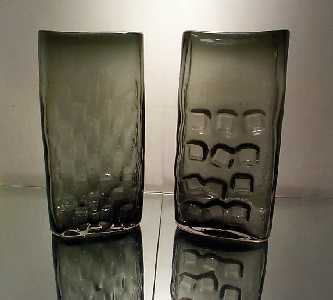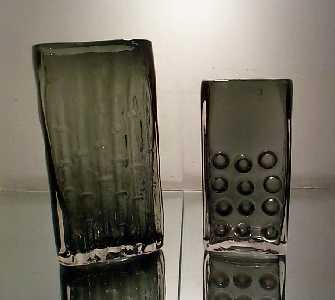Mould blown angular Soda vases introduced at the 1962 Blackpool fair
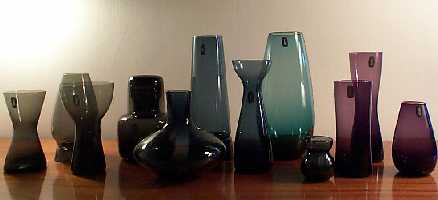
The items shown here represent the rarer shapes. Originally launched in Midnight Blue, Shadow Green and Amethyst, these thinly-blown soda vases were also in some cases made in Ruby, Golden Amber, Twilight and much later in Pewter. Whitefriars changed their label during 1962 from the 'Hooded Monk' to the more stylised logo, and this range of vases can be found with both styles of label.
Optic rib vases introduced in the 1964 catalog
A range of Deep Blue, Deep Green and Ruby vases cased in clear crystal with internal horizontal optic ribbing. Deep Blue was replaced in 1969 by Kingfisher Blue which is more turquoise. There was some crossover, and a number of Blue Hooped vases (pattern 9680) in the textured range were made in this Deep Blue as well as in the Kingfisher Blue.i/ii. Pattern 9584 (6" and 7¼"); iii. Pattern 9583 (6½"); iv. Pattern 9586 (5½"); v. Pattern 9585 (5¼"); vi. Pattern 9587 (5¾"); vii. Pattern 9582 (6½"); viii. Pattern 9518 (4").
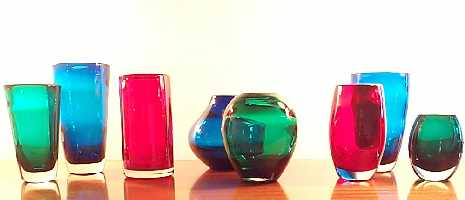
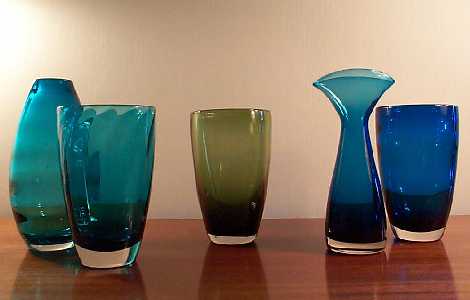
Experimental Optic rib vases, not cataloged, with the exception of v. Vases ii, iii and v are all pattern 9582, however ii has the optic banding running vertically instead of horizontal and iii is in an experimental form of Sage Green that has a slightly roughened texture (called 'zest') to the surface. i and ii are Kingfisher Blue while iv and v are Deep Blue.
Hand cut lead crystal introduced from 1964
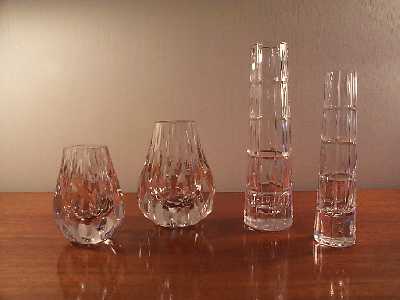
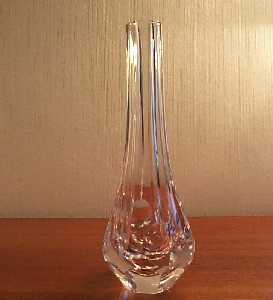
Left plate: i/ii. Pattern C570, 1964 - 1980 (4½" and 5½"); iii/iv. Pattern C597 shown in 9¼" (1967 - 1974) and 7¾" (1972 - 1980), not shown 6½" (1972 - 1980). Right plate: i. Pattern C585, 7¾" (1964 - 1980). c1
Whitefriars remarked of these vases: "The English invention in 1676 of lead crystal with it's intrinsic clarity and brilliance very soon led to the development of the art of cutting glass, a skill almost as old as Whitefriars itself. Although modern electrically driven lathes are now used to turn the cutting wheels, the intricate skills of the craftsman cutter remain constant in the practice of this old craft. The patterns illustrated suggest why, after 300 years, no substitute has been found to replace the qualities for which English hand cut crystal has become world renowned."
Vases from the 1966 catalog
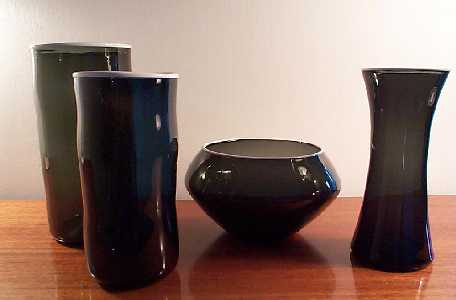
Thin-wall mould blown soda vases with an applied enamel edging. These vases are quite rare as the ceramic in many cases did not adhere adequately to the soda glass. The enamel used was the waste from the thermometer manufacture. Shown in Shadow Green they were also made in Midnight Blue. i/ii. Pattern 9637 (10½" and 9") this pattern was also made in 7½" (not shown); iii. Bowl pattern 9635 (9" dia.); iv. Pattern 9638 (9") this pattern was also made in 7½" high (not shown).
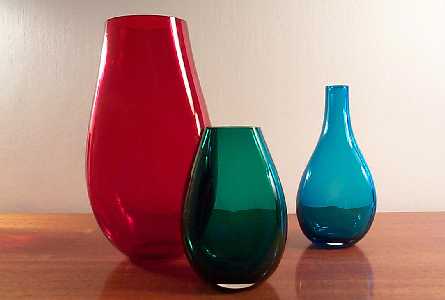
Dented vases (a.k.a 'Pinched' vase). Shown in Ruby, Deep Green and Deep Blue, but also made in Shadow Green and Midnight Blue. i Pattern 9632 Ruby (10½"); ii. Pattern 9630 Deep Green (6½"); iii. Pattern 9633 Deep Blue (7¾").
Textured range launched in 1967
The textured range designed by Baxter and launched in 1967 is the most widely known of Whitefriars glass. Moulds were made from pieces of old wood, bark, tacks, nails and wire. These components were used in highly original and unusual ways that produced striking effects when cast into iron and used to manufacture cased textured glass. The range was introduced in the three colours Willow, Indigo and Cinnamon, with some of the smaller vases also being made in flint during this period too. Of the original colours Cinnamon was in production for 1 year longer than Willow or Indigo.
Cinnamon
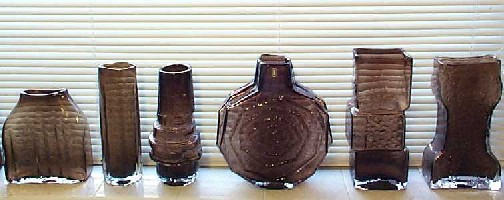
Indigo
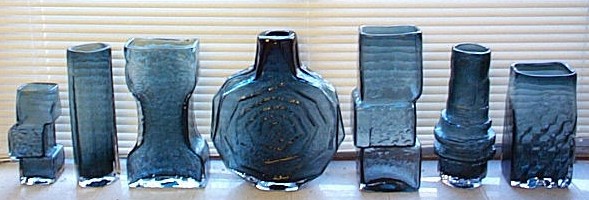
Willow
